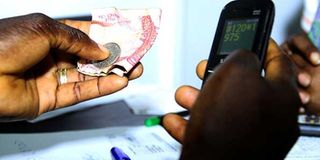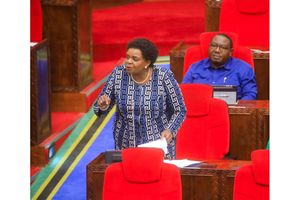Zanzibar mobile money access up

What you need to know:
- According to the FinScope Tanzania 2017 – Zanzibar Report, the number of mobile money subscribers on the isles jumped from two in every ten people in 2013 to four in every ten people in 2017.
Dar es Salaam. The number of people accessing mobile money services in Zanzibar has almost doubled in four years, a new report shows.
According to the FinScope Tanzania 2017 – Zanzibar Report, the number of mobile money subscribers on the isles jumped from two in every ten people in 2013 to four in every ten people in 2017.
The report unveiled on Tuesday provides an up-to-date comprehensive understanding of the financial landscape and insights into who is being served by the financial sector, what they are doing and why, where they are and who is being left behind.
Going by the report, Zanzibar has made progress in expanding formal financial inclusion by seven per cent since 2013. This progress has been attributed to the rise in mobile money services. According to survey findings, the proportion of the adult population living within five kilometres of an access point has reached 95 per cent, with 73 per cent of Zanzibari adults owning a mobile phone.
The survey was conducted between April and July, this year, and captured the characteristics, attitudes and behaviours of an increased sample of over 10,000 respondents across the country, creating a statistically valid national picture of the financial landscape.
This, according to Zanzibar Chief Secretary Abdul-Hamid Yahya Mzee, who unveiled the report in Unguja, signifies that the barrier of distance has been reduced.
He noted that growth in the banking industry can be attributed to the emerging collaboration between banks and mobile money providers to offer digital credit solutions.
On Tanzania mainland, mobile money services have been previously reported as having reached 16.6 million people, which accounts for 60 per cent of the adult population.
However, Dr Mzee noted that both on the national scale and in Zanzibar, insurance and banking have only shown modest growth or remained stagnant.
The FinScope Tanzania 2017 report follows previous reports of 2006, 2009 and 2013 to track and benchmark patterns of use across all types of formal and informal financial services over a decade.
Dr Mzee noted that it was important for stakeholders to see the success of efforts in recent years to improve financial inclusion across the country, working with the Bank of Tanzania(BoT) as well as government ministries, donors, the private and financial sectors and other organisations. ‘Today is just the start of our FinScope journey. We should not only embrace today’s insights, but query further and strive to deepen the financial sector landscape through insights,’’ he said.
Despite the rise in financial services through formal providers, the most popular way to make and receive payments is still cash. The proliferation of digital wallets has yet to replace this reality, the report further reveals.
“It is evident from FinScope data that many people face challenges of cash flow management,’’ noted Dr Mzee.
Experts say that financial service stakeholders need to delve into the reasons behind this trend to come up with financial services that will be take up by Zanzibaris, and that will also meet the needs of the Zanzibari market.
Rural people, small holder farmers, younger people, women and people with low levels of education are still left behind in greater proportions compared to other population segments.
The Zanzibar-specific report presents a measure for the demand and usage of financial services by population segments and insights into the barriers to financial inclusion in Zanzibar.
This report was a collaborative effort of BoT, Ministry of Finance and Planning, National Bureau of Statistics (NBS), Office of Chief Government Statistician Zanzibar (OCGS) and financial services providers and other private sector players and non-governmental organisations.



